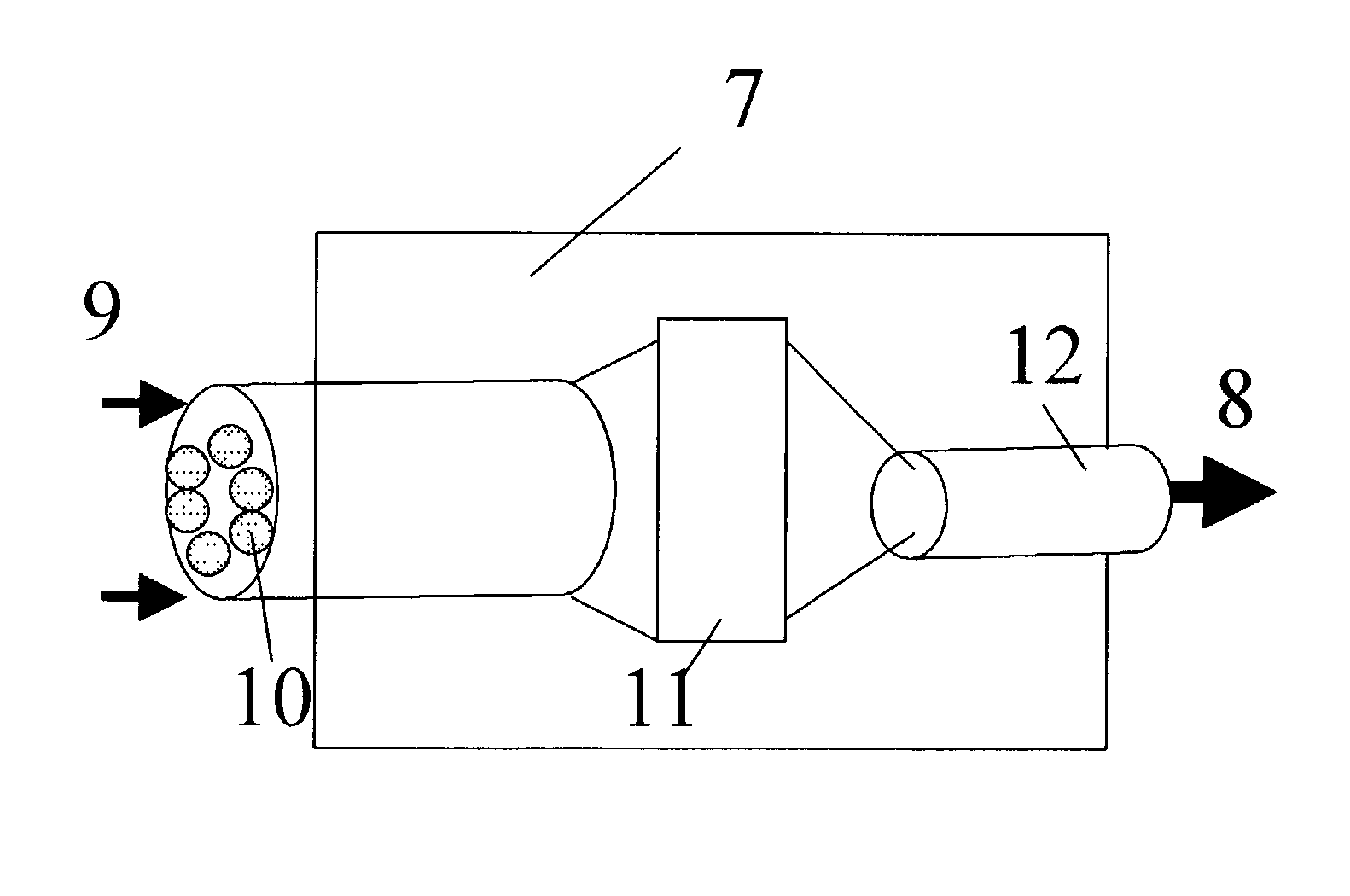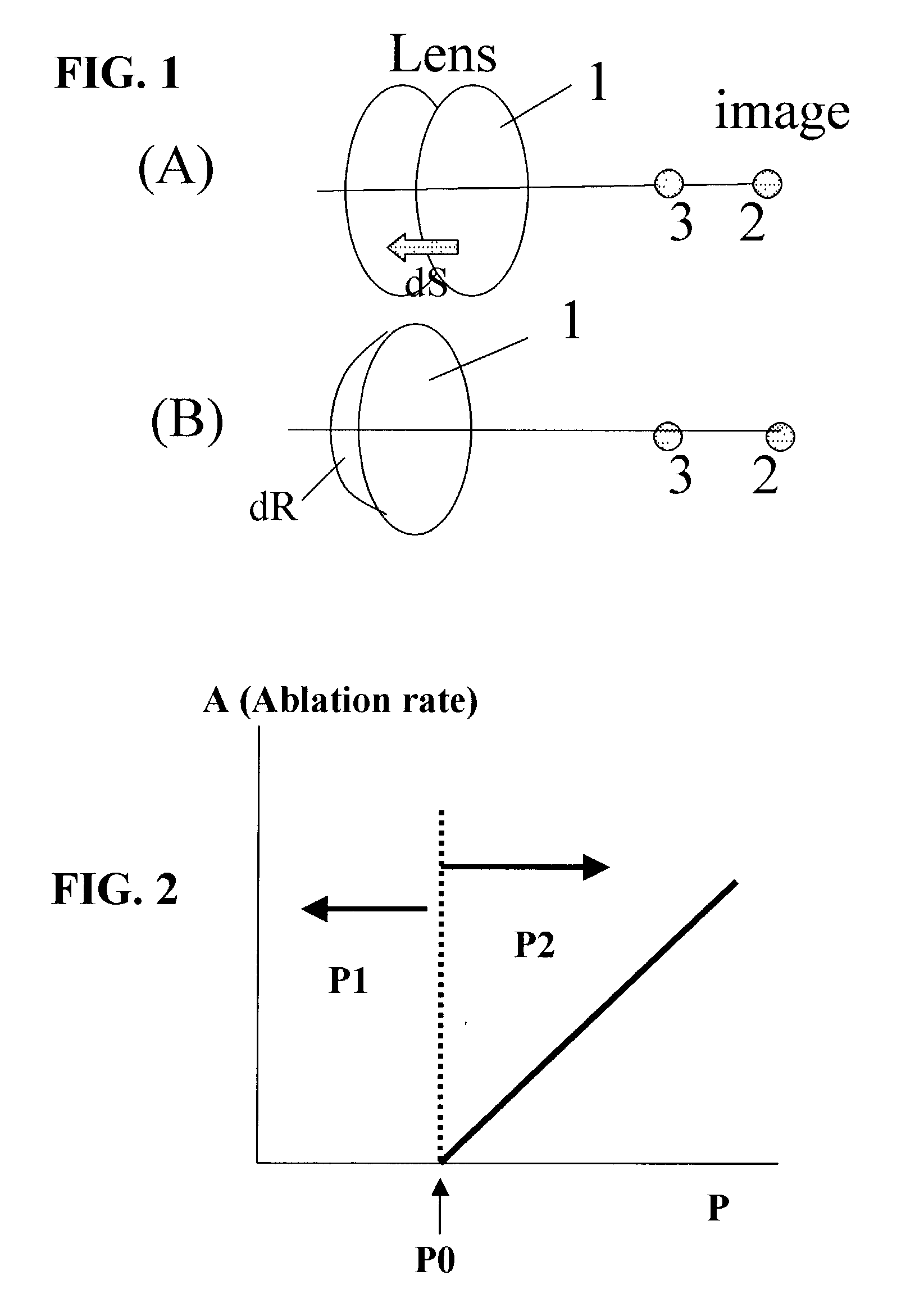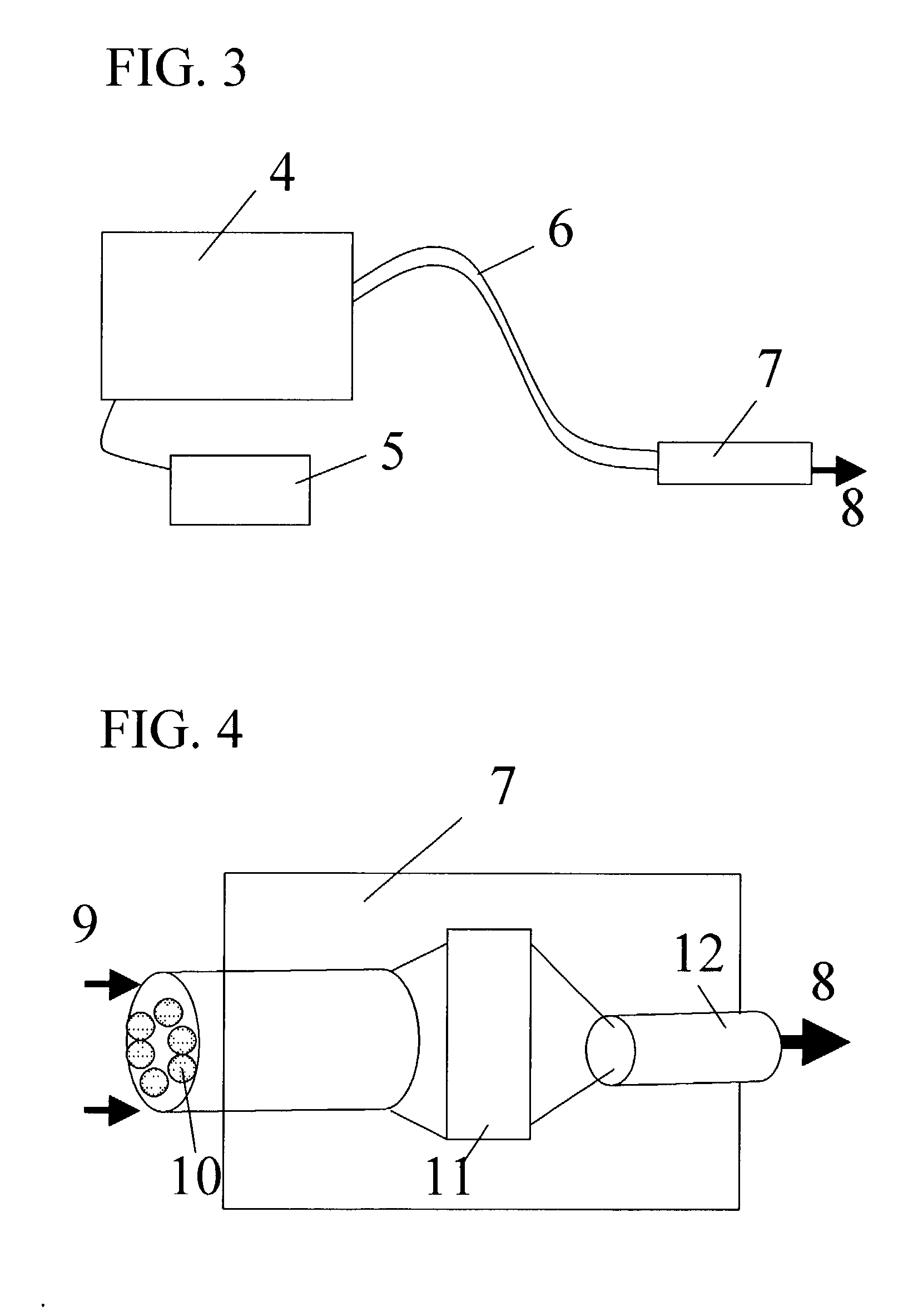Methods and apparatus for presbyopia treatment using a dual-function laser system
- Summary
- Abstract
- Description
- Claims
- Application Information
AI Technical Summary
Benefits of technology
Problems solved by technology
Method used
Image
Examples
Embodiment Construction
[0026] First we shall present the mechanism for accommodation. We define the total accommodation (TA) given by two components the lens curvature change (dR) and the lens anterior shift (dS) As shown in FIG. 1, the lens 1 will have image shifted from position 2 to 3 to see near for presbyopia patients by either the change of the lens curvature (dR) or its shifting (dS) Our calculations (J. T. Lin, unpublished) showed that depending on the initial lens curvature and its anterior chamber depth, the TA is about (03 to 20) diopters for dR change from 105 mm to (1015 to 832) mm and about 0.97 diopters for each 10 mm shift of dS. Therefore for "old lenses" (say age of 50 and up) with rigid lens capsule (or small dR), the main contribution for accommodation is from the anterior shift (dS), whereas for "young lens" (say age of 40-49), the lens curvature shall be the dominate components In our clinical results using an infrared laser, we found about (15 to 30) diopter of accommodation after t...
PUM
 Login to View More
Login to View More Abstract
Description
Claims
Application Information
 Login to View More
Login to View More - R&D
- Intellectual Property
- Life Sciences
- Materials
- Tech Scout
- Unparalleled Data Quality
- Higher Quality Content
- 60% Fewer Hallucinations
Browse by: Latest US Patents, China's latest patents, Technical Efficacy Thesaurus, Application Domain, Technology Topic, Popular Technical Reports.
© 2025 PatSnap. All rights reserved.Legal|Privacy policy|Modern Slavery Act Transparency Statement|Sitemap|About US| Contact US: help@patsnap.com



